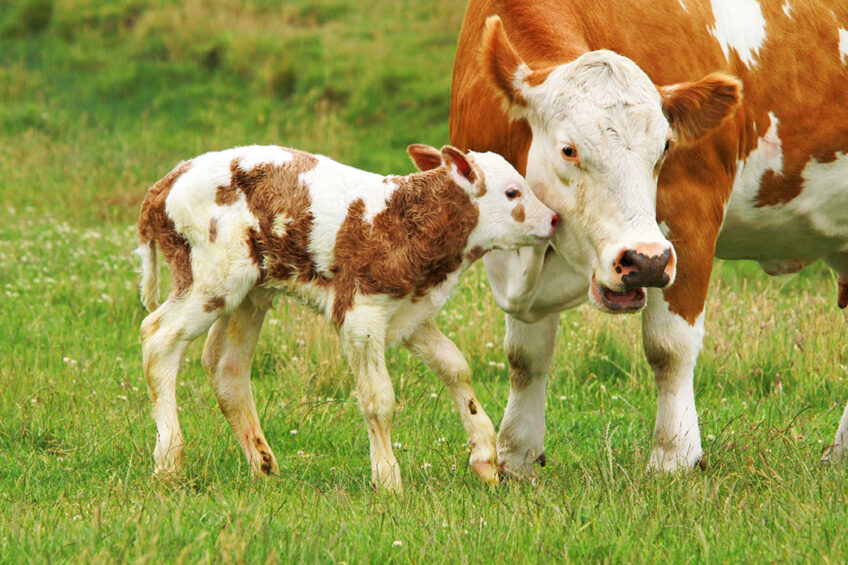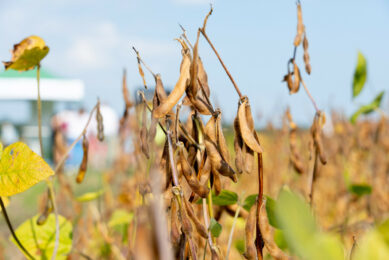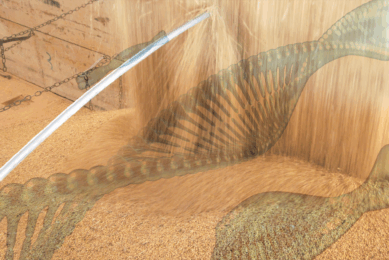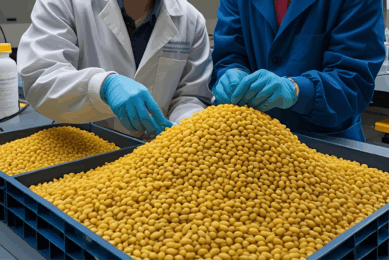Benefits of glauconite in cattle feed

A research conducted by a group of Russian scientists showed that supplementing starter feed for calves with an iron potassium phyllosilicate mineral glauconite could secure better weight gains in calves and improve their health.
Look promising for replacing soybean with lupine
The scientists said that glauconite-based feed additives could come in handy in the regions where the share of grain in feed stands close to 85% to 90%, like Russia. Among other things, glauconite may help farmers to lower production costs of feed by replacing expensive soybean meal with cheaper alternatives, primarily lupine.
Prevent or treat GI disorders
In the livestock industry, glauconite is already used as a feed additive called to prevent or treat gastrointestinal tract disorders.
“Having adsorption, ion-exchange properties, glauconite interacts with the chemicals whose ions accumulate on its active surface and excrete them from the body,” the scientists explained.
Glauconite to condition soil
Glauconite has long been used in Europe as a green pigment for artistic oil paint under the name green earth. In Russia, it has been mined and actively used for centuries for icon painting. Currently, this mineral is primarily used as a source of potassium for soil conditioning in both organic and non-organic farming.
Russian study of glauconite in a starter feed for calves
The scientists from the All-Russian Research Institute for the Use of Equipment and Petroleum Products in Agriculture have run a study on the possible use of glauconite in a starter feed for calves based on extruded barley, peas, lupins. In the control group, calves got the same feed without glauconite and with lupine beans replaced by extruded soybeans.
Currently, glauconite is mined in at least 5 deposits in European Russia. To conduct the research, the scientists picked up the mineral from the Tambov deposit, which is believed to have some unique features. The glauconite of Tambov origin has a high level of oxides of magnesium, iron, sodium and potassium, and 1.5–2 times less aluminium oxides compared to that of other Russian deposits.
The scientists explained that they set their sights on absorbents for 2 purposes:
to control mass chronic non-communicable diseases and pathologies of the gastrointestinal tract in young cattle and
to lower production costs of started feed of calves.
Rationale & aim behind the study
“In some farms, up to 100% of newborn calves suffer from such diseases. Despite the ongoing treatment, 25% to 50% of animals die. The main strategy for combating toxicosis is associated with the development of special feed additives that would effectively bind toxins in the lumen of the small intestine. It is important that the binding capacity of the agents be high and the cost of the antitoxic product be acceptable,” the scientists said.
“For these reasons, starter feed for calves based on inexpensive components from high-protein plants and biologically active additives are becoming increasingly relevant,” they continued.
On the other hand, the feed industry currently battles a shortage of soybean, the price of which has been seen rising in the past several years, the scientists said, adding that presently a lot of effort is taken to find a replacement for soybeans.
“The aim is not only to reduce the dose but also to find a worthy alternative to soybeans so that the productivity of animals would not be sacrificed, and the quality of final products and physiological characteristics [of animals] would remain at the proper level. A limiting factor in using lupine [instead of soybeans] in feeding cattle is the presence of alkaloids which have a toxic effect. Nevertheless, all modern varieties offered for production are characterized with a rather low alkaloid content,” the scientist added.
The trial
The scientists said that the experiment was carried out on 2 groups of calves of Black-and-White breed, similar in origin, live weight, health status and genetic potential.
The scientists reported that during the first months of the trial, the live weight of animals in both groups was almost the same, but at the age of 3 months, calves in the test group exceeded the controls on average by 2.8 kg, and at the age of 6 months – by 6.2 kg, or 5.3%.
In addition, in the test group, the scientists registered 31% less gastrointestinal diseases compared to the controls. The overall duration of the disorders in animals of the control group was 42 days, compared to 28 days in the test group.
To study the effect of glauconite concentrate on the composition and size of the microflora of the gastrointestinal tract, the scientists studied samples of calves manure collected at the age of 5 months.
“In calves of both groups, [it was found] beneficial microorganisms and opportunistic pathogens – staphylococci, enterococci and moulds, which, against unfavourable nutritional factors, can provoke gastrointestinal diseases. The quantitative composition of the microflora in the representatives of both groups was within the normal range,” the scientists said, adding that still some difference was noted.
“A decrease in typical bacteria in the faeces of animals in the test group by 20% and a slight decrease in the number of staphylococci and yeast-like fungi in relation to the controls testified to the sorption capacity of glauconite in relation to opportunistic microflora,” the scientists said.
The scientists claimed that their study showed the practical significance of the use of starter feed based on different types of high-protein vegetable raw materials and a natural adsorbent – glauconite concentrate.











